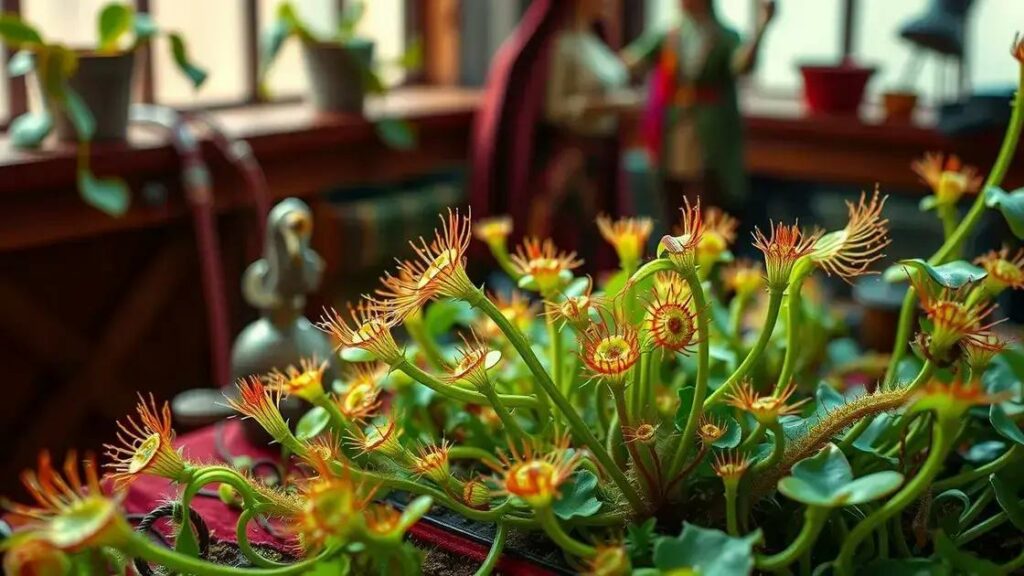How to care for a venus fly trap plant indoors can seem daunting, but with the right information, you can cultivate a thriving indoor garden. These fascinating plants are not only unique but also a wonderful addition to any home. Ready to learn some essential tips for their care? Let’s dive into the key aspects that ensure these carnivorous wonders flourish indoors.
Table of Contents
ToggleChoosing the right soil for your venus fly trap
Choosing the right soil for your venus fly trap is crucial for its health and growth. These fascinating plants thrive in specific soil conditions that mimic their natural habitat, typically found in bog-like environments. Selecting the appropriate soil can make all the difference in maintaining a vibrant indoor garden.
Soil requirements for venus fly traps
- High drainage: Venus fly traps require soil that drains well to prevent root rot.
- Low nutrient content: These plants thrive in nutrient-poor soil, similar to their native environment.
- Acidic pH: Aim for a soil pH between 4.5 and 6.5.
Recommended soil mixtures
- 100% sphagnum moss: This is an excellent option as it retains moisture while providing high drainage.
- Peat-perlite mix: Combine equal parts sphagnum peat and perlite for optimal balance.
- Orchid bark and moss blend: A mixture containing orchid bark and sphagnum moss can also work well.
How to prepare the soil
- Choose your materials based on the recommended mixtures above.
- Thoroughly moisten the mixture before planting.
- Fill the pot with the prepared soil, ensuring it has sufficient aeration.
Common mistakes to avoid
- Using regular potting soil: This is too rich in nutrients and can harm the plant.
- Overwatering: Ensure the soil drains well to avoid waterlogging.
Remember, a well-prepared soil mix not only enhances the health of your venus fly trap but also makes it more resilient against pests and disease. For those interested in expanding their indoor gardening arsenal, exploring indoor gardening techniques can be incredibly helpful.
Understanding the watering schedule for indoor care

Understanding the watering schedule for indoor care is essential to nurturing your venus fly trap successfully. These unique plants thrive in moist environments, but it’s crucial to strike a balance to prevent overwatering, which can lead to root rot.
Best practices for watering your venus fly trap
- Use distilled water: Tap water contains minerals that can harm your plant.
- Water when the soil is slightly dry: Check the top inch of the soil; if it’s dry, it’s time to water.
- Avoid standing water: Ensure excess water drains out, as this can suffocate the roots.
Creating a watering schedule
- Check moisture levels every 3-5 days.
- Adjust depending on the season: Water more frequently in the growing season (spring and summer).
- Monitor humidity levels, as higher humidity may reduce the need for frequent watering.
Common mistakes to avoid
- Overwatering: Always allow the soil to dry slightly between waterings.
- Using unfiltered water: This can introduce harmful substances to your plant.
Maintaining proper moisture levels is vital for a happy and healthy venus fly trap. For those interested in broadening their gardening insights, exploring indoor gardening techniques might provide valuable tips on plant care.
Optimal sunlight exposure for your venus fly trap
Optimal sunlight exposure for your venus fly trap is crucial for its overall well-being and growth. These remarkable carnivorous plants need a good amount of sunlight to thrive and capture their prey effectively.
Understanding sunlight needs
- Full sun exposure: Venus fly traps flourish in bright, direct sunlight for at least 12 hours a day.
- Indoors vs outdoors: They can adapt to both environments, but growing indoors requires a balanced light source.
- Avoid insufficient light: Low-light conditions can weaken the plant over time, making it susceptible to diseases.
Best lighting options
- Natural sunlight: Position your venus fly trap near a south-facing window for optimal light exposure.
- Grow lights: If natural light is insufficient, use full-spectrum grow lights, ideally with a timer to simulate day length.
- Adjust seasonally: Monitor light intensity and adjust the position of your plants according to seasonal changes.
Signs of inadequate light
- Leggy growth: If the plant is stretching towards the light, it may not be receiving enough.
- Poor trap formation: A lack of adequate light can result in smaller and weaker traps.
By ensuring your venus fly trap gets the right amount of sunlight, you can keep it healthy and productive. For those looking to broaden their gardening skills, exploring indoor gardening techniques can provide additional valuable insights.
In conclusion
Caring for your venus fly trap plant indoors requires attention to specific needs, including choosing the right soil, establishing a proper watering schedule, and ensuring optimal sunlight exposure. By following these essential tips, you can create a thriving environment for your plant. Additionally, you might find tips on enhancing your indoor garden helpful in expanding your gardening skills and ensuring your plant remains healthy and vibrant.

